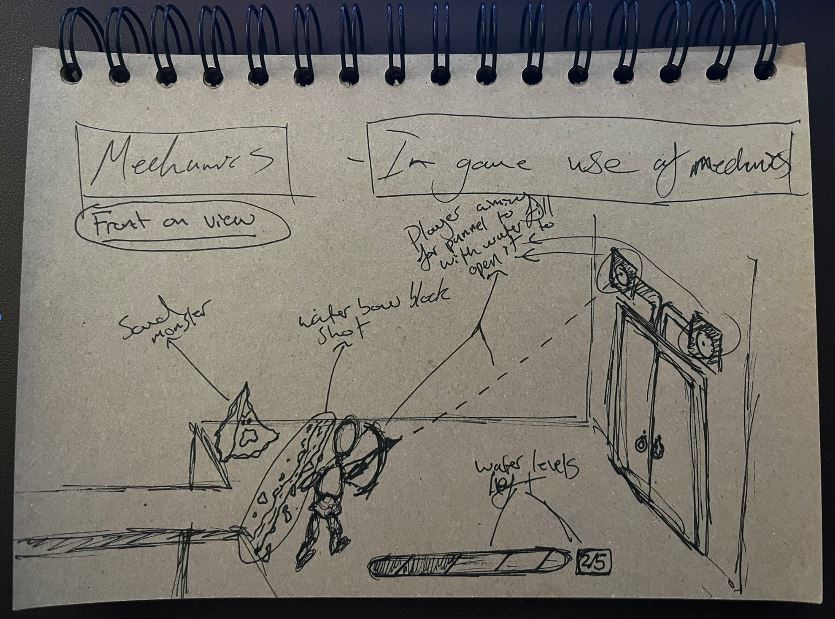Mechanics Refinement
1. Water Resource Mechanics
Design Intent:
The water resource mechanic reinforces the game’s theme of the water crises through strategic decision making, and implementing scarcity. This mechanic adds tension to the game by requiring players to plan their actions before they act.
Functionality:
- On the players screen there is a water bar that depletes with every water ability used (e.g. shooting water arrows, extinguishing fires, activating machinery etc)
- To add some tension and strategy the player can only refill their water levels after completing a puzzle / level, this forces the player to be conservative with their water usage
- This mechanic requires players to multitask as they need to manage water levels for both surviving (diverting enemies) and progressing (Activating objects).
Example in Gameplay:
How this mechanic works in game is for example in a Mongolian-inspired level, players must use a limited water supply to:
- Shoot arrows to activate panels that the player can’t reach
- Extinguish fire storms and sandstorms
- Divert sand and fire enemies by creating temporary water paths
Within a Mongolian-inspired level, players will have to use their limited water abilities to
- Use their water bow to extinguish paths blocked by fire
- Potentially shoot a water arrow to activate panels / buttons they cant reach
- Divert Sand creatures by creating a temporary water path with their water bow ability. If their water bar is empty before the end of the level, the player cannot progress and will have to restart.

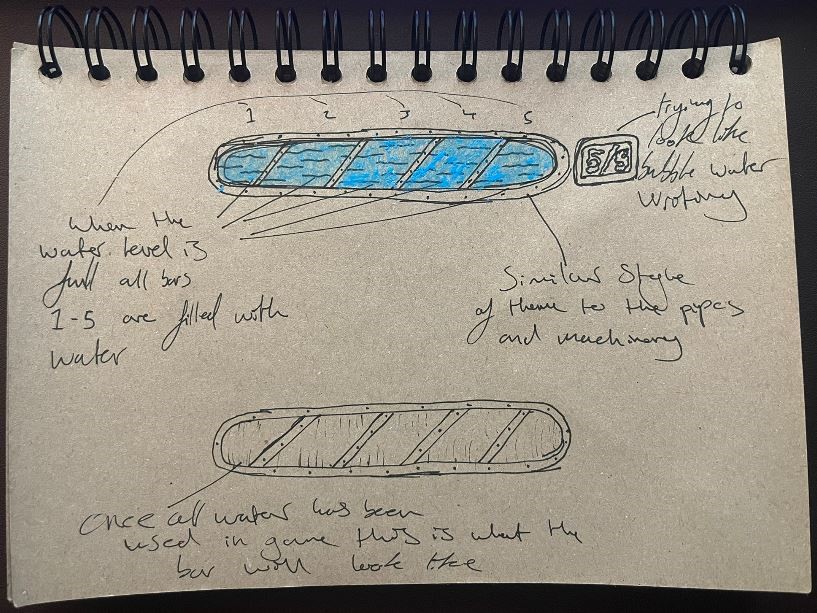
2. Perspective-Switching
Design Intent:
By having numerous perspectives it creates a varied gameplay with the ability to experience new ways of exploring and playing a game. By having a front on perspective it allows for more player movements like jumping. In birds eye view it allows for more advanced and intriguing puzzles and strategies.
Functionality:
- As the player progresses through the level they automatically switch perspectives when entering new areas (E.g. after running though a level in front on perspective they enter a door and switch to a birds eye view)
- Front-on view is generally used for basic tasks such as dodging enemies and activating panels
- Birds-eye view is used for in depth puzzles, heavily relies on resource management, and spatial awareness/ management.
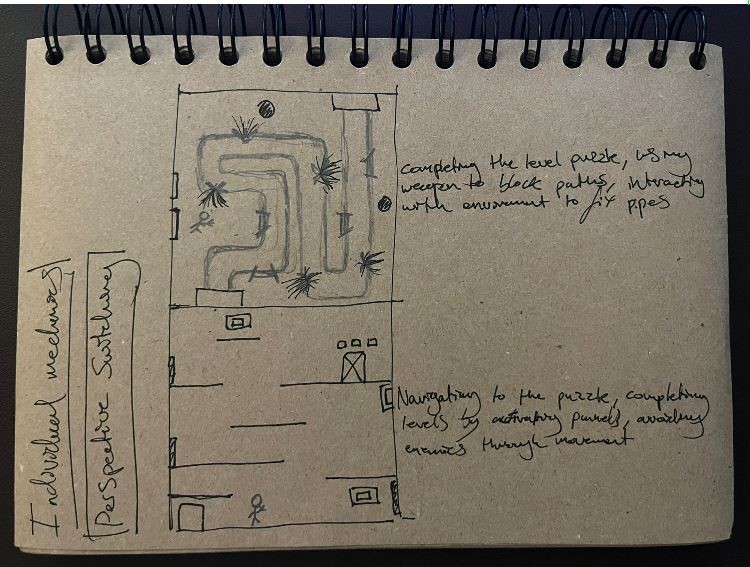
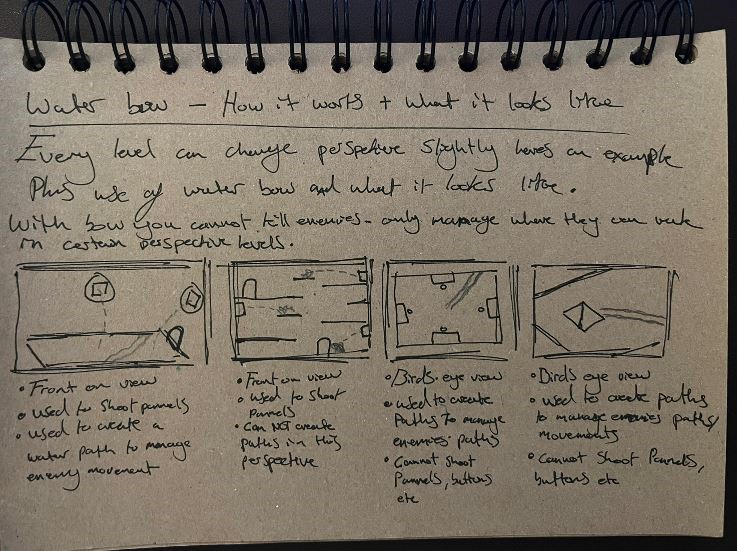
3. Bow and Arrow Mechanics
Design Intent:
The bow and arrow has numerous abilities, water-based, and reinforces themes of water scarcity and creativity.
Functionality:
- Here are a few utilities of the water arrow:
- Creates temporary water streams (Can be used to extinguish fire, or go over quicksand)
- Block and divert enemies through water paths
- Activate machinery, distant panels / switches
- However, each use of this bow depletes the players water bar
Example in Gameplay:
In a front on view, the player needs to activate all 4 panels before they can progress. Two panels can be reached without a bow but the other requires the player to use their bow. Whilst out maneuvering the enemies through jumping on different platforms, the player realises they cant reach the final panel with the bow and arrow so must create a water stream on one of the fiery platforms above. This enables the player to get up higher and, whilst the temporary stream has put out the fire, shoot the final panel with an arrow.
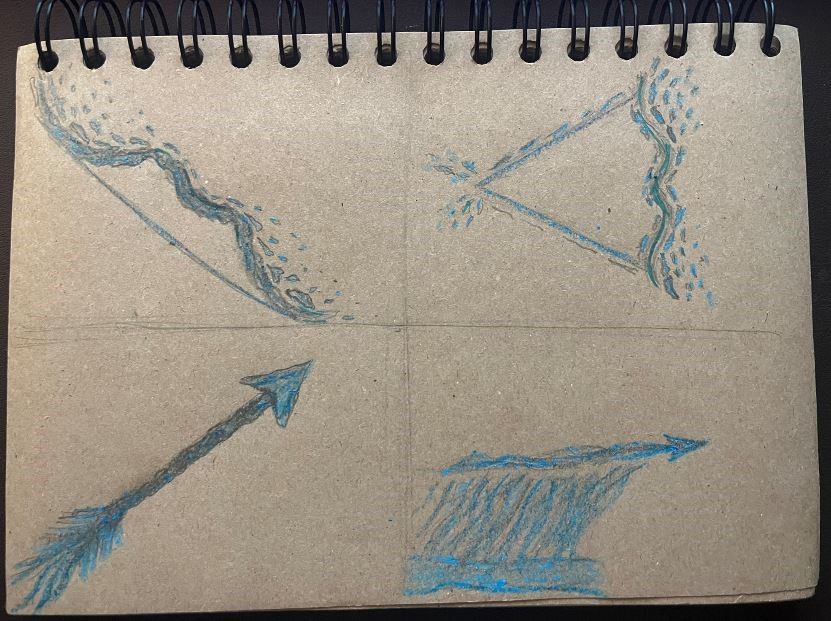
3. All Mechanics in-game

